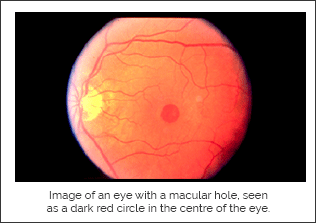A macular hole is the formation of a hole in the macula, the central region of the retina. As a highly sensitive layer of tissue responsible for translating light signals into vision, any damage to the retina causes vision loss. Furthermore, because the macula brings clear and detailed central vision, a hole in the macula can cause the loss of central sight and even full blindness. Thus, early intervention provides the best chance of recovering central vision.
CAUSES
TRAUMATIC MACULAR HOLE
Traumatic macular hole formation occurs when a traumatic ocular injury causes a hole to form in the macula.

